#スモモ
Explore tagged Tumblr posts
Text
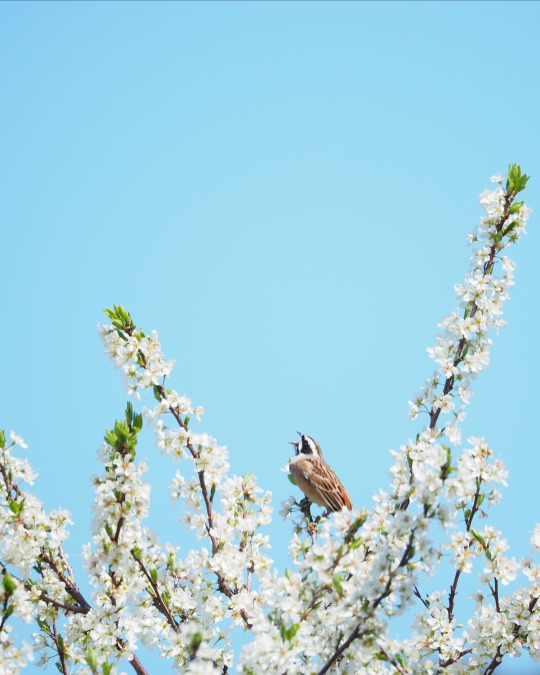
ここ数日のポカポカ陽気で、スモモの花も満開!ホオジロも気持ちよくさえずっていました。
53 notes
·
View notes
Text
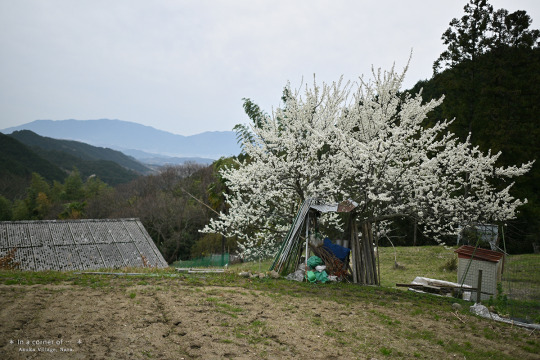
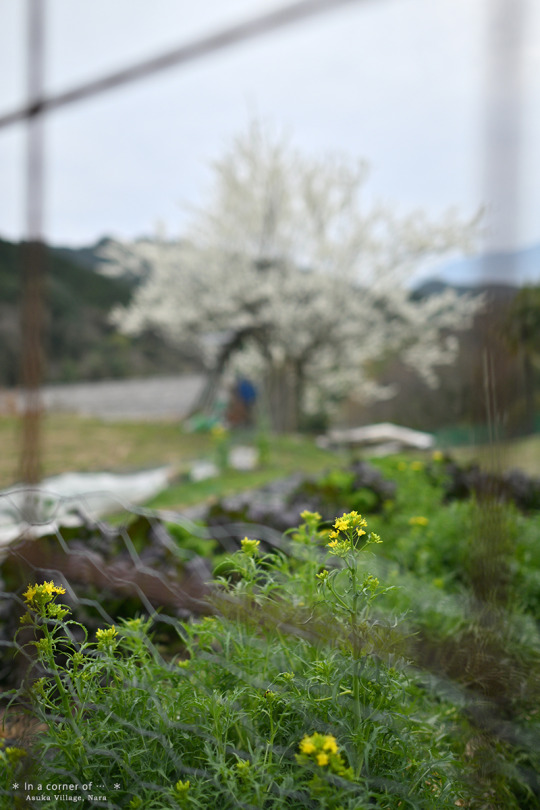



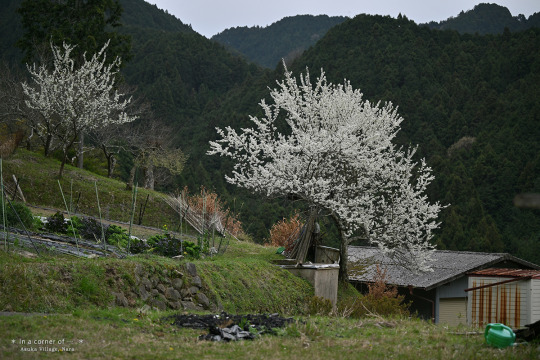
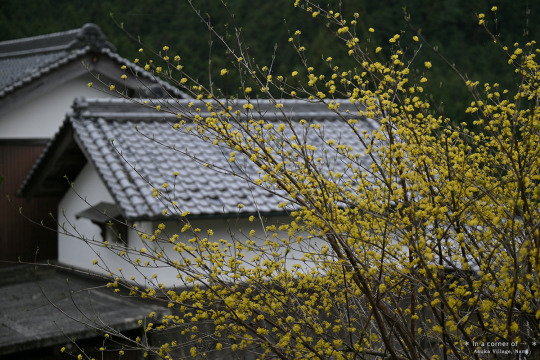
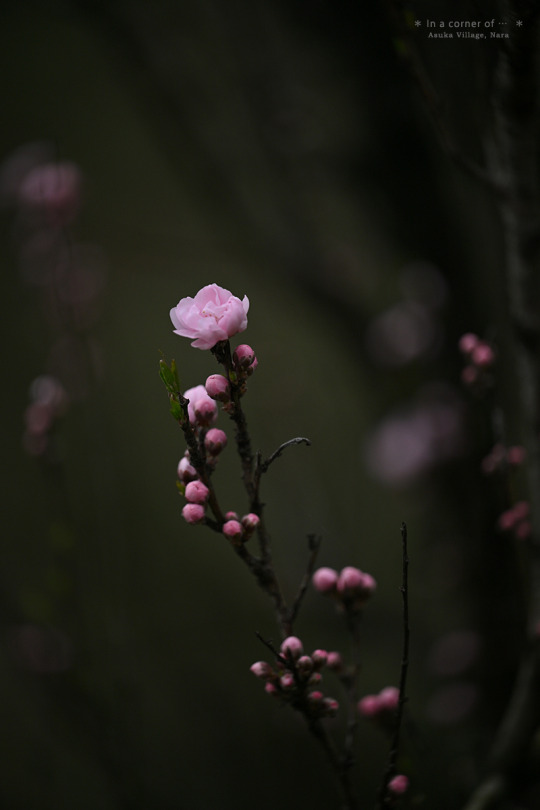
【明日香の片隅で…】
甘樫丘・橘寺・石舞台など 観光地の桜の前を通り抜け 明日香の片隅で咲く 白い花に誘われました♪ スモモかなぁ? 2024年4月2日撮影
近くには民家もありサンシュユが咲いていたり 桃の花も咲いていて春を迎えていました。
8 notes
·
View notes
Text

#prunus salicina#Jindai Botanical Garden#Tokyo#スモモ#神代植物公園#東京#Tamron SP AF 90mm F/2.8 Di MACRO 1:1 (272E)
8 notes
·
View notes
Text
スモモ(?)



2024Mar.F公園にて
毎年3月に公園に白い花を咲かせる木一本ありますが、未だに確信をもてないですが、画像検索するとスモモに一番似ているような気がします。
2 notes
·
View notes
Photo
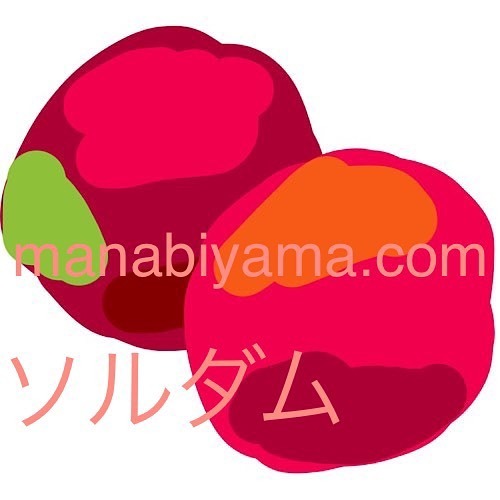
ソルダム < かわうそ。 #絵しりとり 初夏がたのしみ。 #スケッチ #イラスト #illustration #ソルダム #スモモ #プラム #食べ物 #果物 #soldum #manabeepic #イラストレーター https://www.instagram.com/p/Cqb72ZXPL-L/?igshid=NGJjMDIxMWI=
0 notes
Quote
母は「スモモ(プラム)」のことを「バタンキュー」と言っていた。知り合いの人にそれを言ったら“「はたんきょう(巴旦杏)」じゃないの?”って言われた。それを思い出してネットで検索したら、ある地方では「バタンキュー」って言ってる場所があるのを知った。
Xユーザーの大塚ミチコさん
52 notes
·
View notes
Text
15/06/2024







1年ぶりのさつま町佐志地区のスイレン畑はスイレンが綺麗でした😇







これまた久しぶりの一休・ちょいcafe
本当は無い桃ちゃんタルトを1個作ってもらいました💦 もうひとつは生チョコ抹茶タルトです。 ケーキに付いている赤い実はオーナー宅のスモモ
lunchの肉丼も美味しかった😋




今朝、ジャースイーツとピスタチオプリンは取り置きの電話は入れていましたが、チョコバナナもあるじゃないですか!
急遽追加でお買い上げ、イートイン😇




ジャースイーツは持ち帰りに打ってつけ✨
折角なのでピスタチオプリンも持ち帰ってからありがたく頂きました😇
#備忘録#photography#japan#reminder#kyushu#kagoshima#美味しさは正義です#スイーツには夢がないとダメ#sweets#satsuma#徳丸屋#tokumaruya#satsumasendai#一休・ちょいCafe#スタンドカフェ~ちょいカフェ#standcafe_choicafe#桃活2024#桃活#桃活鹿児島#🍑
65 notes
·
View notes
Text
The Entirety of Japanese, Lesson #1
AKA - I'm sorry, you do have to learn all three scripts.
Welcome to our first lesson! Today, we are going to learn how to read Japanese.
Sort of.
See, it's not something you can learn in one day, or one lesson. Learning a language is a gradual process that doesn't cement until you start *using* it.
So we will go over the basics, both the WHY three scripts and the HOW to learn all three over time, and then provide 10+ FREE resources from all over the internet for you to practice with!
Let's go!
Why All Three Scripts?
Short answer: because I said so.
Kidding.
The Japanese language has no spaces in it. Unlike English where there is a space between each word, Japanese sentences look like this:
スモモも桃も桃のうち
All three scripts are in this sentence. It translates to "plums and peaches are both like peaches". An odd sentence, but here's why I chose it...
When you write it in *just* Hiragana (the basic, "first" phonetic script), it looks like this:
すもももももももものうち
Yikes. So many も, with no way to tell apart the multiple words in the も train.
So... how can you tell similar words apart when written out?
Wait, let's look back a bit. Can you tell where different words are in the sentence before? Yes. Even without being taught *anything* about the Japanese language, you can tell where different words start just by looking at it.
By writing in multiple scripts, you can tell similar words apart.
Okay... But How Do I Learn Them?
There's quite a few ways to learn them. In fact, on Thursday we will be publishing community responses from our Discord detailing how THEY learned the scripts.
But for now, here is the two first scripts you'll learn in their entirety, thanks to Coto Japanese Acamedy
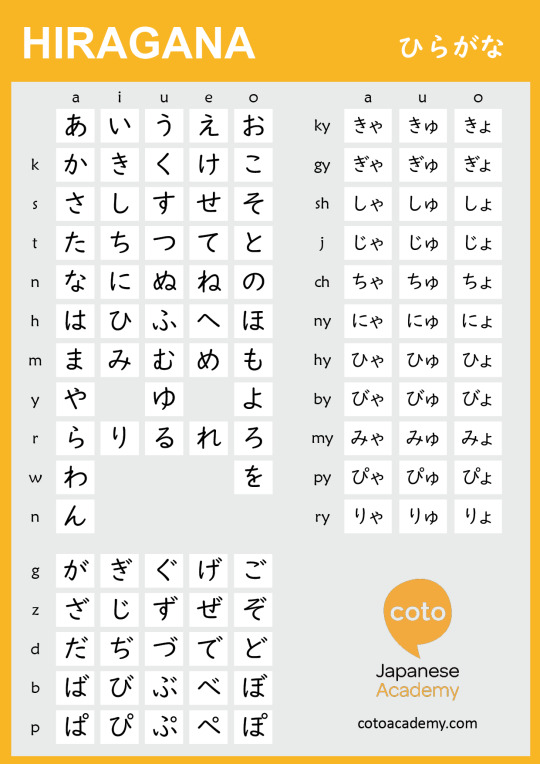
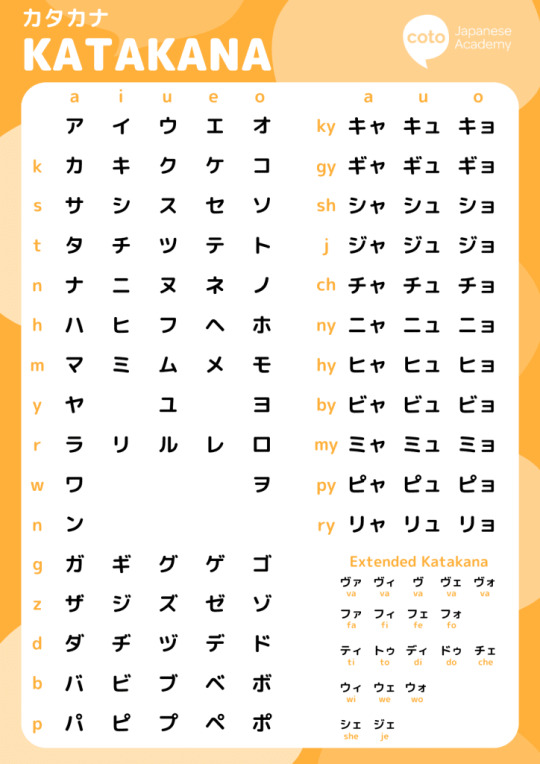
You'll learn these first for three reasons:
First, they are easier.
Second, you can spell any word in Japanese with these two scripts. Not a hard and fast rule, but Hiragana is used for native Japanese words and Katakana is usually used for international loan words, emphasis, names, and 'sound effect words', aka onomatopoeia.
Third, you'll see Hiragana above Kanji (the difficult one) that tells you how to pronounce Kanji.
As far as actually learning them, you *could* just write them down over and over.
Writing is super important when learning Japanese.
But it might be easier to start with some apps, games, and videos where you can learn the characters both in context AND within words.
Here's our favorite FREE resources:
Duolingo (Website, Android, and Apple) is great for learning singular words and Hiragana / Katakana, however explanations of grammar is limited to desktop. Still, PERFECT for the beginning stages regardless of device.
Bunpo is another free app for learning Japanese!
JapanesePod101's videos on Hiragana and Katakana over on Youtube are fantastic for hearing natural speach.
Tofugu's Hiragana and Katakana blog posts have the * best * mnemomics, with sound bites.
Busuu's (Website, Android, Apple) Japanese course starts off with Hiragana words to get you speaking immediately.
Kana (Apple, Android) is a free app dedicated to JUST Hiragana and Katakana.
Tae Kim's Guide to Learning Japanese is the holy grail for new Japanese learners. Of course, it has a no-frills explanations of all three scripts.
Japanese Ammo with Misa has detailed lessons on everything, including Kana.
Here's a video on the difference between printed and written Hiragana fonts.
And finally... our discord server.
Wait... what about Kanji?
Well, the problem is there's a lot to learn. A LOT.
You'll be learning them over the course of yearssssssss. But that's fine; you can tune into our lessons to learn them.
Join right here to practice what you learn! You'll also gain access to new friends learning the same language AND more free resources.
We can't wait to see you there!
#japan#japanese#japanese language#learn japanese#japanese studyblr#nihongo#japan travel#japanese culture#japan trip#anime and manga#anime#anime art
190 notes
·
View notes
Text
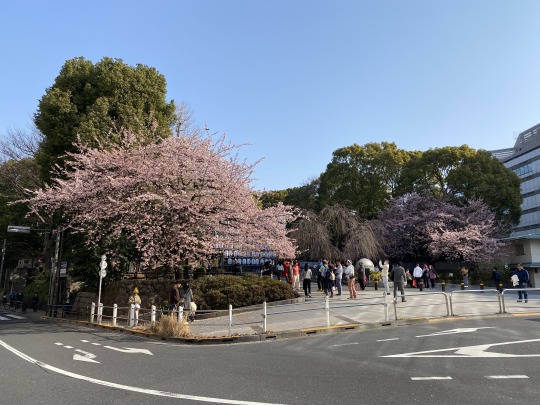


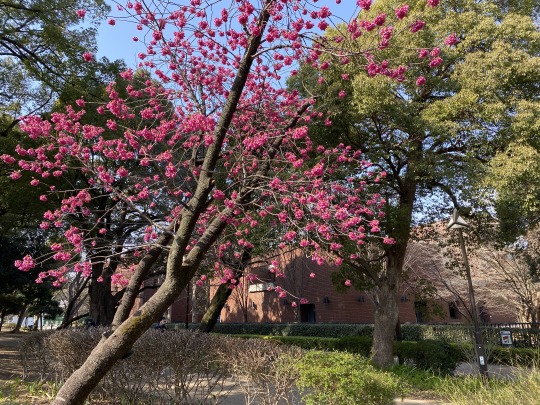


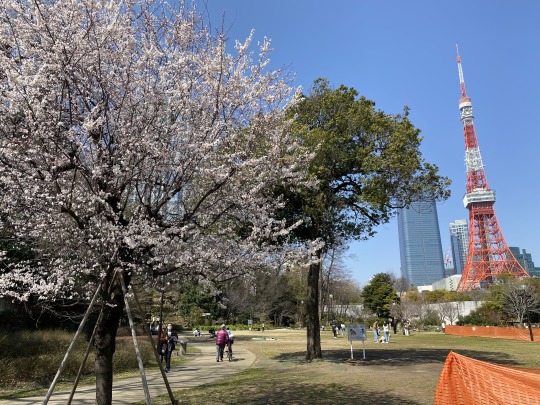



2024.3.16 東京 上野公園 大寒桜 寒緋桜 赤葉桜(スモモ)
芝公園 東京タワー🗼と赤葉桜(スモモ) エリカ 寒緋桜
22 notes
·
View notes
Text

Kiryu and Kaoru by 春日スモモ (@Kharu11)
20 notes
·
View notes
Photo
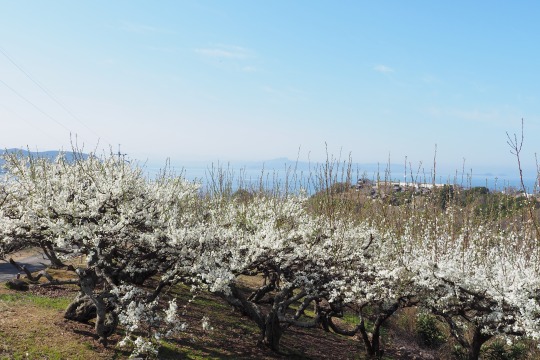
いろとりどりの花が咲きほこる島 スモモの真っ白な花もキレイです!
[map]
25 notes
·
View notes
Text


2024/08 いけばなお稽古記録
上:生花新風体 スモモ アレカヤシ トルコキキョウ
下:自由花 ケイトウ オミナエシ ワレモコウ リンドウ ススキ
三種生けのつもりが、アレカヤシをうっかり切りすぎてしまい、先生より手直しが入り、急遽好きな新風体に変更。 自由花は来月の支部研究会の予行練習第一弾。ワレモコウを長く使うか、短く使うか、先生にしばし相談。高いと印象的だが、低い方がバランスが取りやすそう。
3 notes
·
View notes
Text

ブルアカのスモモちゃん
未プレイですがデザインが可愛いので描きました
28 notes
·
View notes
Photo

✿ ブランデー | Brandy ・ブランデーとは、もともとブドウを主原料に造られた蒸留酒を意味していましたが、現在ではブドウ以外のフルーツを主原料とする蒸留酒もブランデーの一種とされています。 ・ブランデーの語源はフランス語の「Vin Brûlé(ヴァン=ブリュレ)」です。もともとブドウのワインを蒸留したお酒を「焼いたワイン(Vin Brûlé)」と呼んでいました。それをオランダ商人が取り扱うときにはオランダ語で「Brandewjin(ブランデージン)」と呼ばれ、さらにイギリスで流通するときは英語で「Brandy(ブランデー)」と呼ばれるようになりました。 ・なぜ、ワインを蒸留してみようと思いついたのでしょうか。その理由として、以下のようなエピソードが伝わっています。今から300~500年前にフランスのコニャック地方からオランダへワインを輸送していた際にワインが酸っぱくなってしまい、そのままでは売り物にならないため試しに酸っぱいワインを蒸留してみました。すると、意外なことに香り高いお酒になったことからブランデーが誕生したと言われています。 ・アルコール度数は40~50%程度で、ウイスキーと同じくらいです。原料のフルーツに由来する甘く芳醇な香り、クセが少なくまろやかな味がブランデーの特徴です。 ・ブランデーはブドウを主原料とするものが一般的で、多くの銘柄があります。なかでもフランス・コニャック地方産の「コニャック」、ガスコーニュ地方の「アルマニャック」は、AOC(原産地統制呼称法 Appellation d'Origine Controlee)によって格付けされる有名銘柄です。また、ブドウ以外のフルーツを主原料とするブランデーを総称して「フルーツブランデー」、フランス語で「Eau de vie fruitsオー・ド・ヴィー・フリュイ」と言います。主な原料はリンゴ、サクランボ、スモモ、木イチゴ、洋ナシなどです。使われる原料によってブランデーの名称が変わります。
#brandy#ブランデー#飲み物:ブランデー#飲み物:アルコール#tip:ブランデー#飲み物#蒸留酒#焼いたワイン#ワイン#ブランディ#果実酒#アルコール:40%〜#コニャック#フルーツブランデー#ぶどう#果物#アルコール:果物#アルコール#アルコール:ぶどう
2 notes
·
View notes
Text


フランス / サヴォワ地方 アドリアン・ダカン サヴォワ・アプルモン 2022(白) 色合いは若干濁りのある無色に近いレモンイエロー。クエッチ(スモモの仲間)、シトラス、フェンネル、ヨード(昆布・わかめ・のりなどに含まれているミネラル)の香り。ワインはフレッシュでレモンのような生き生きとした酸があり、塩気のあるダシのようなピュアなエキスに、滋味豊かなミネラルがきれいに溶け込んでいます。 750ml ¥3,850(4,235) プレッツェルの塩味と、チョコの甘さのバランスが絶妙な KOBE CHOCO の割りチョコをおともに♩
2 notes
·
View notes
Text







mes possibilites hier. 昨日のわたしの可能性。 洗濯をする。 洗濯物を片付ける。 ジャムを煮る。 シロップを仕込む。 ドクダミ茶を煎る。 荷物をパッキングする。 シダと苔を植え替える。 暑さのせいで あまり眠れず、 妙なテンションで やろうと思っていたことを かたっぱしからやる。 外は一日中 雷鳴が轟いていたけど 結局雨が激しく降ったのは 午後から一度だけ。 そんな天候の中で、姫睡蓮が開花。 花びらがじゃみじゃみになっているのは 激しい雨のせいなのか、それとも 誰かさんがついばんだのか。 そういえば、今朝は 2Fの窓のそばに ヒヨドリたちが来ていたな。 スズメ食堂は、7羽のお客さまで 賑わっていた。 Kさんにもらって 追熟させていたスモモは、 きれいな色のジャムに。 少しずつ収穫して冷凍していた 庭の野いちごも、わずかだけど煮た。 ドクダミ茶は 煎った方が飲みやすいことがわかった。 何か他のお茶とブレンドすれば もっと抵抗なく飲めそう。 古いフライパンを 煎る用にとっておいてよかった。
9 notes
·
View notes